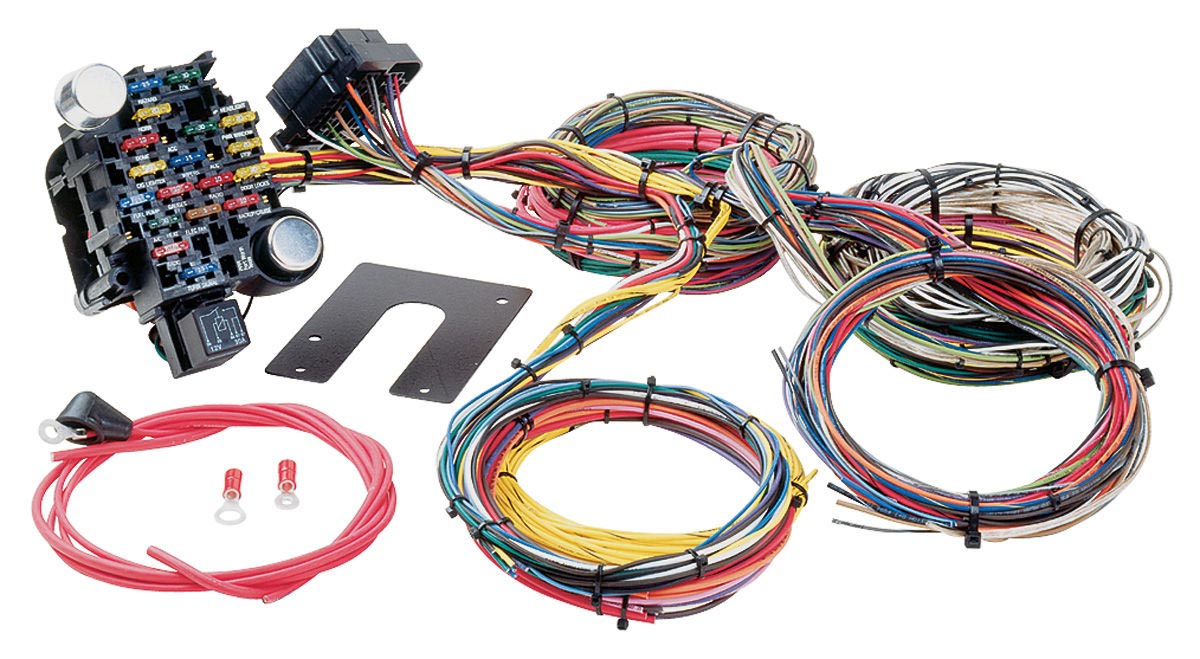Newsroom
While many professionals refer to cable assemblies and wire harnesses interchangeably, these multi-wire (or multi-cable) arrangements can be crafted differently to serve different purposes for unique environments and applications.
Simply put, a wire harness is the exterior covering, or sheath, that protects an inner conductor or bundle of conductors. These inner components may already have sheaths for insulation and protection, or they may rely on the wire harness to create an ideal operational environment. Either way, the wire harness provides critical organization at the heart of a system, and does so with a simple, straightforward, low-cost design.
Wiring harnesses are designed to be simple yet effective, which keeps their cost down compared to more complex harnessing solutions. In many cases, a standard wire harness will provide all of the components necessary to optimize any interconnection requirements.
Kinkong can assemble a variety of such harnesses, and our experts can help you determine what will fit your needs. However, if your needs are especially complex or specific, we also offer custom harnesses.
ㆍWhether the harness will be exposed to continuous flexion
ㆍIf the harness will be used indoors or outdoors, and under what specific conditions
ㆍHow many circuits and conductors are required for the assembly, as well as their characteristics
ㆍLevel of voltage to be carried
ㆍPotential exposures, including chemicals, corrosive fluids, weather conditions, and moisture from other sources
ㆍMaximum, minimum, and average operating temperatures, as well as potential fluctuations
ㆍLocal safety and environmental regulations that might impact component selection, installation, and inspection
ㆍRouting, breakouts, general shape of form
Since wire harnesses can be used to solve such a diverse range of interconnection challenges, they are used extensively throughout myriad industries. Virtually any industry that relies on cable arrangements can benefit from the use of wire harnesses. The following sectors, among others, often rely on wire harnesses to maximize efficiency and protect employees against the dangers of haphazard wiring:
ㆍAerospace. Wire assemblies are used in an expansive range of aerospace products, such as drones, satellites, and aircraft to facilitate the transmission of power, communication, and more.
ㆍAutomotive. Wire harnesses are critical for saving valuable space within automobiles within the dashboard, under the hood, lighting/signals, and more. They are also important for organizing complex wiring in such a way that technicians can easily identify their purpose.
ㆍMedical. Hospitals and clinics rely on wire harnesses to organize and protect wires in and between equipment, including crash carts, diagnostic and imaging equipment, dental equipment and more.
ㆍTelecommunications. Wire harnesses optimize use of space in a variety of telecommunications equipment, such as modems, routers, repeaters, and a variety of other communication and broadband equipment.
ㆍInformation technology. Nearly all computers, laptops, servers, and other IT technology contain wire harnesses to optimize space and organize wires for easy identification and installation by technicians.
ㆍConstruction. Wire harnesses are widely used within structures to provide wiring insulation and organization.
ㆍManufacturing. CNC machines and other powered manufacturing equipment rely on wire harnesses to route and organize external and internal wiring.
ㆍRobotics and automation. Wire harnesses are used on most automated equipment and robotics to safely route, group, and protect critical wiring
Wire harnesses would not be so widely used if they didn’t present substantial benefits for wiring applications. Among other advantages, wiring harnesses benefit companies in the following ways:
ㆍDecreases cost compared to multiple individual assemblies
ㆍImproves organization, especially when a system relies on hundreds of feet of complicated wiring
ㆍDecreases installation time for projects involving extensive networks of wiring or cabling
ㆍProtects conductors from the elements outdoors or from chemical and moisture exposure indoors
ㆍProvides a safer work environment by cleaning up loose or scattered wires, maximizing space, and preventing trips and damage to wires and cable
ㆍEnhances safety by minimizing the risk of shorts or electrical fires
ㆍDecreases installation and maintenance time by potentially minimizing the number of connections and organizing components in a logical configuration
The many benefits of wire harnesses stem from very simple design principles. Sheathes protect wires against abrasion or exposure to hazards, minimizing the risk of workplace incidents. Connectors, clips, lacing, and other organizational strategies drastically reduce the amount of space that wiring must occupy and ensure that technicians can easily locate the components that they need. For equipment or vehicles that regularly contend with a web of lengthy wires, a wire harness is sure to benefit everyone.
As a set of connecting tools, a wire harness is widely used in various industries, such as aerospace, communications, medical, military, automotive, and so on.
Specific to the automotive industry, as an organized group of wires, as well as connectors and terminals, an electrical wiring harness is designed to run throughout the vehicle make it possible for information and electrical power to be forwarded. Because of this, the wiring harness plays a vital role in making sure that various components are correctly connected.
Each line in the wire harness is responsible for carrying the energy and electrical signals used to start the engine, navigation systems, electric windows and doors, headlights and taillights, dashboard instruments, and so on.
The design of the car has changed over the years. With more advanced features, various components require more and/or different electronic devices to meet unique requirements while saving space. Experts from KinKongWireharness have the necessary expertise to develop.
